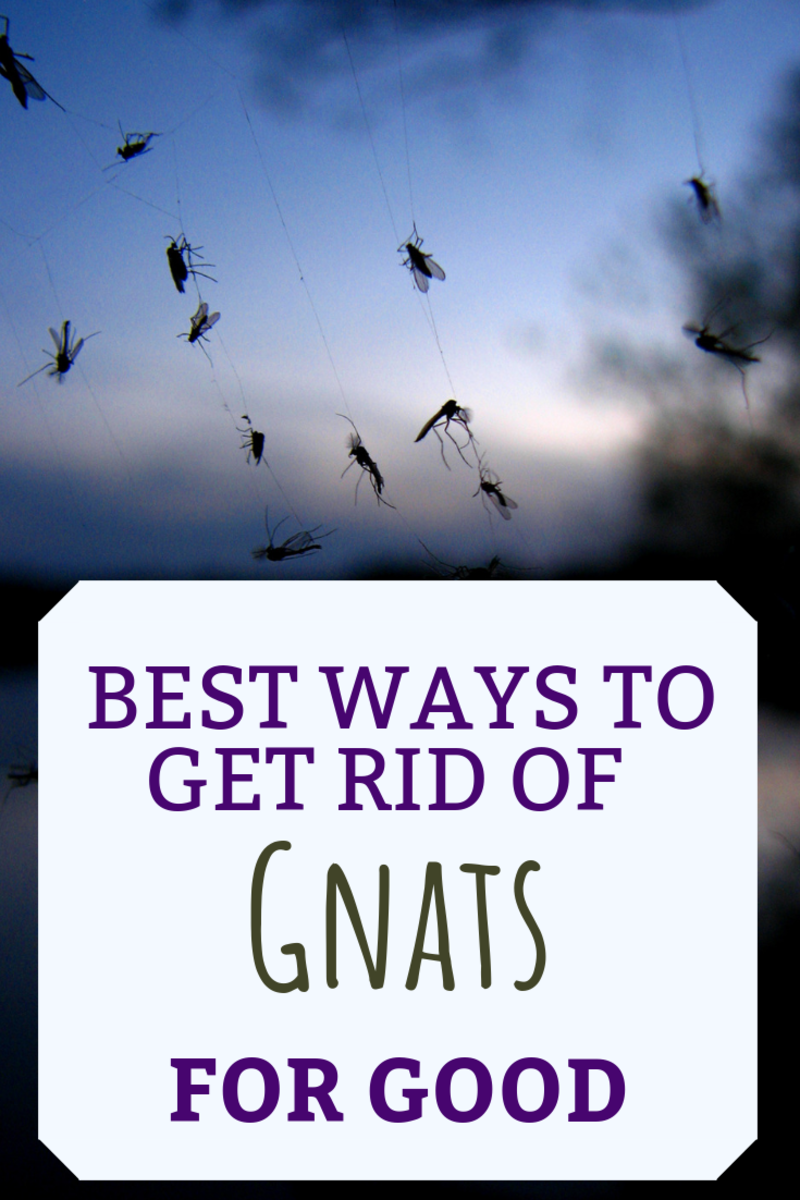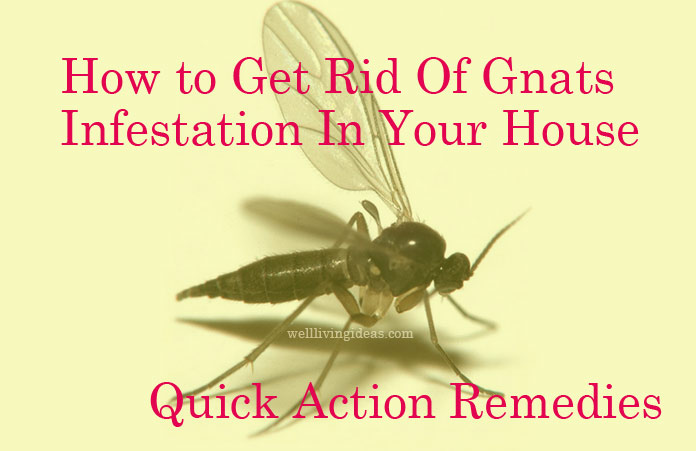Table Of Content

‘Gnats may enter homes through open windows and doors, particularly in favorable outdoor conditions,’ explains Matt Kunz, president, Mr Rooter Plumbing, a Neighborly company. Gnats are a nuisance, and a rapid increase in their numbers can be extremely unpleasant. But as well as its being unwelcome, a plague of the critters can leave you asking why you’re getting so many gnats in the house suddenly. Pour wine that’s past its prime into a small dish; add a couple of drops of dish soap.
How to Get Rid of Gnats in Your Home
Some gnats may even find their way into your trash can or garbage disposal in search of food and moisture. Most gnats don’t bite, sting, or spread disease, but they’re still a nuisance, particularly indoors. These annoying insects are attracted to sweet smells, body heat, sweat, and other forms of moisture. Additionally, they can eat and lay eggs in nearly any kind of decaying organic matter, so they can be hard to get rid of. When we’re talking ‘gnats’, we’re using the everyday name for some different small winged insects. The gnats that you’ll find inside your home are likely to actually be fruit flies, or fungus gnats, or drain flies (aka phorid flies).
Fungus Gnats Love Your House Plants
If all else fails, or you’re not interested in making a DIY solution, try placing a store-bought fly trap such as flypaper, cards, or ribbons near where gnats gather. Some of these products are even designed to sit in the soil alongside a potted plant to catch fungus gnats. Once the sticky side is sufficiently filled, toss it and add a new one. You can also try a bug zapper that’s aimed at catching smaller insects or, if the problem really persists, call a reliable pest control company.
How to Prevent Gnats in Your Home
The bad news is that they can lay about 200 to 300 eggs during their brief lives. Each egg matures into a larva, and then transitions into a pupa and adult. Depending on the species, a gnat’s entire life cycle can be completed in as few as 3 weeks. If you have houseplants, ensure they are not being overwatered, as this creates a year-round breeding and feeding source inside your home for gnats and other pests. Once you have treated your gnat infestation, the key to keeping it from coming back is to clean thoroughly and reduce available sources of food and moisture for the gnats.
How to Get Rid of Gnats for Good, According to an Entomologist - TODAY
How to Get Rid of Gnats for Good, According to an Entomologist.
Posted: Wed, 27 Mar 2024 07:00:00 GMT [source]
Add a few tablespoons of sugar and apple cider to a bowl and give it a squirt of dish soap. The sugar will attract gnats, dish soap traps them, and the vinegar ultimately kills them. As with most pest control and management, it’s best to rely on a trained Orkin Pro to help get rid of a gnat infestation. Attracted to damp soil, fungus gnats usually get into homes by flying inside or from infested houseplants brought inside the house.

How to Get Rid of Gnats, Indoors and Out
As gnats try to come out, they’ll get stuck to the tape, leaving you with the most obvious cue of infestation. If there are moth flies currently inside, they’ll come out as soon as they feel a different air movement to one they’re accustomed to. But even if you do use them, gnats won’t give up this perfect breeding space, and they can actually survive the tap flow. You’re more likely to find them in a guest bathroom or other drains and pipes that are not often used, and therefore contain stagnant water. Most bugs just stop by to have a drink, maybe take a tour inside your drain, but making it a home is a whole other thing.
If they can find their way past barriers into your home, they will certainly keep returning to your trash can if there is an odor of rotting food. Learn how to easily eliminate and prevent these persistent pests. In Arizona, the peak gnat activity months are generally from April to October.
They have faint black and white speckling on their heart-shaped wings and tiny white hairs on their body. Even a leaky pipe causing minimal mold or wood rot can provide gnats and other pests with food and water sources. If you can't find the source of your issue but know it must be somewhere, think outside the box to determine where it could be. Light traps can be installed inside and outside to discourage gnats.
Light a candle.
They especially like fruit that’s either rotting or getting close to rotting. If you have a habit of leaving fruit in bowls on the countertop, sooner or later you’ll get fruit flies. The same thing goes for food and drinks made from fruit; leaving half-empty wine glasses out is a sure-fire way to get fruit flies.
Not only that, I’ll share tips on how to trap and verify where gnats might be hiding out in difficult to check places such as drains and food processors. If gnats cannot get into the trash bin, they can’t lay eggs, and there will not be as many gnats in your home. Since every home is different, the Orkin Pro will design a unique treatment program.
If DIY methods fail or if you want to skip right to a guaranteed solution call a professional pest control provider to get rid of gnats. We’ve researched the top pest control companies in the industry and found that Terminix and Orkin provide the best service to homeowners across the country. Essentially, gnats are three types of small winged flies; fruit flies, drain flies, and fungus gnats.

Instead, it’s a loose term for a number of different species of very small, flying insects. These flies lay their eggs in damp organic environments such as potting soil, pipe drains, or rotting produce. The reproduction cycle of fungus gnats, for example, only takes about 17 days, so one gnat can breed hundreds very quickly. They tend to swarm around sources of food and moisture including your fruit bowl, your drains, your houseplants, and even your body.
The presence of overripe or rotten fruits and food in the house or kitchen encourages the breeding of fruit flies. However, a rule of thumb the insects often follow is access to food, moisture and protection, states Orkin's website. This usually comes by way of decaying organic material, such as trash or soil. Gnats are inevitably present in nature, but as with keeping flies out of the house, a little know-how can rid your home of them.
The larvae of most fungus gnat species feed in the soil on fungus, decaying organic matter, and sometimes even the roots of your plant. Gnats are attracted to warm, moist environments and are often found near overripe fruits and vegetables, damp soil and standing water. Fruit flies are drawn to overripe fruit, so even if your fruit isn’t rotting it can attract gnats. Fungus gnats love moist potting soil and drain gnats love moist drains.
Some types of moisture-seeking gnats tend to congregate around sink or tub drains. To combat these drain flies, mix ½ cup bleach into a gallon of water and slowly pour the mixture into the drain. Gnats are attracted to salt and moisture, but more specifically to produce, fresh flowers, houseplants, spilled food, and overflowing garbage cans. You may have unknowingly brought home a plant from a garden center that was infested with gnats—or brought freshly picked produce infested with gnats indoors.

No comments:
Post a Comment